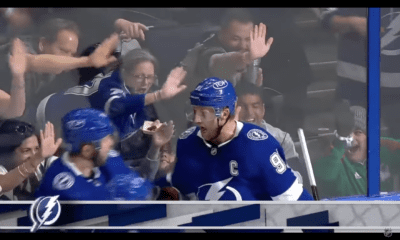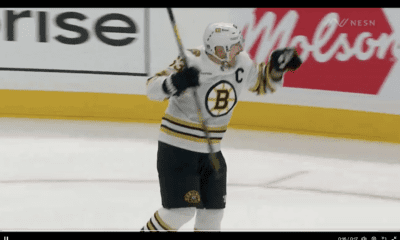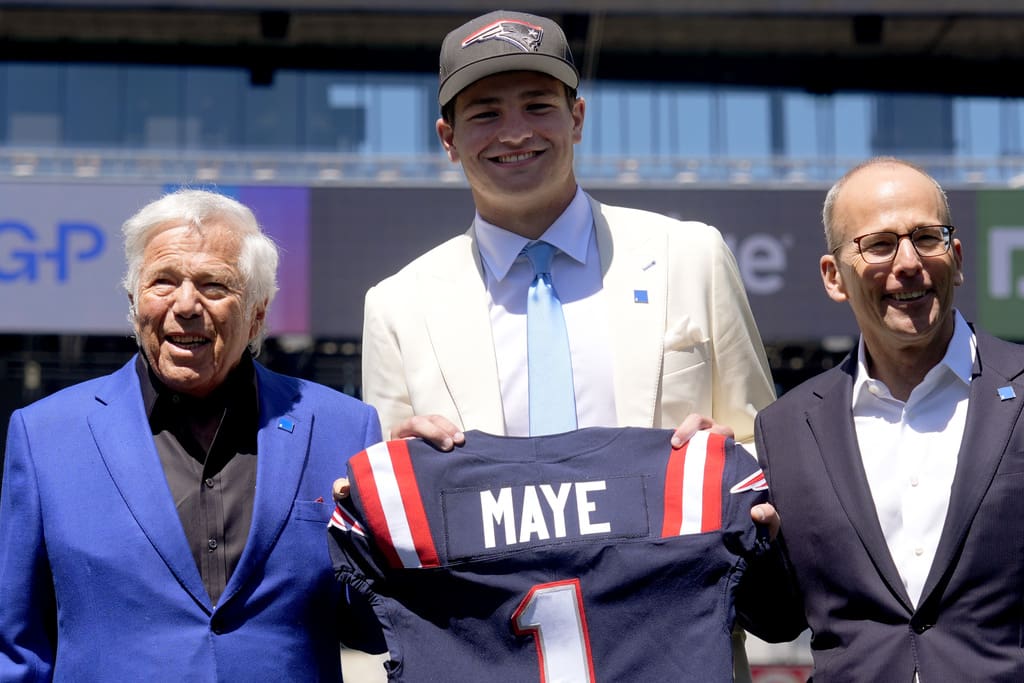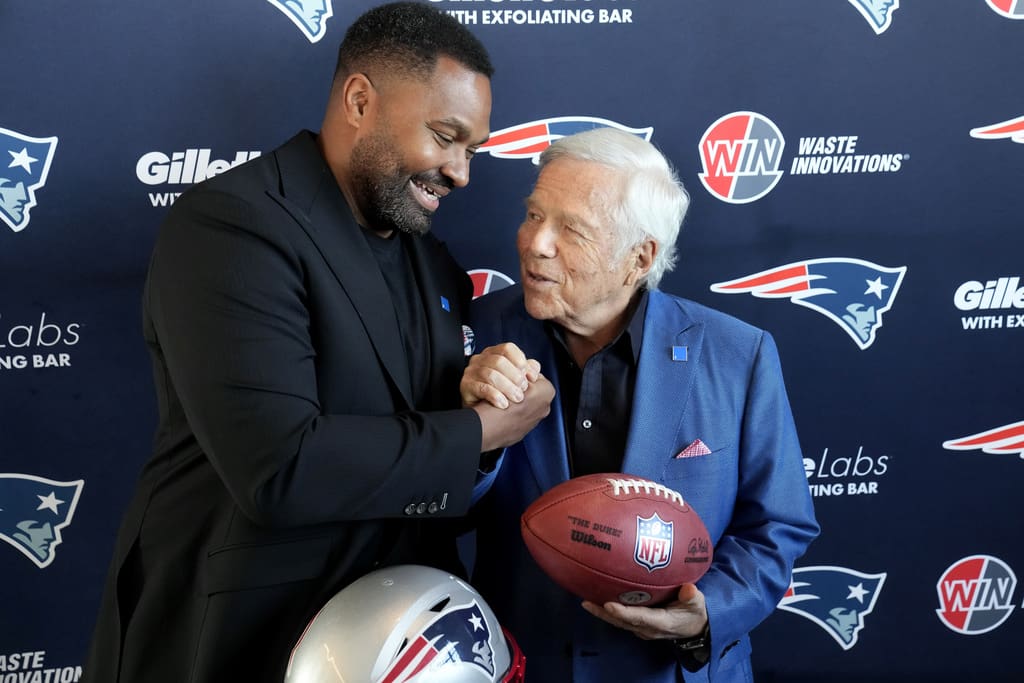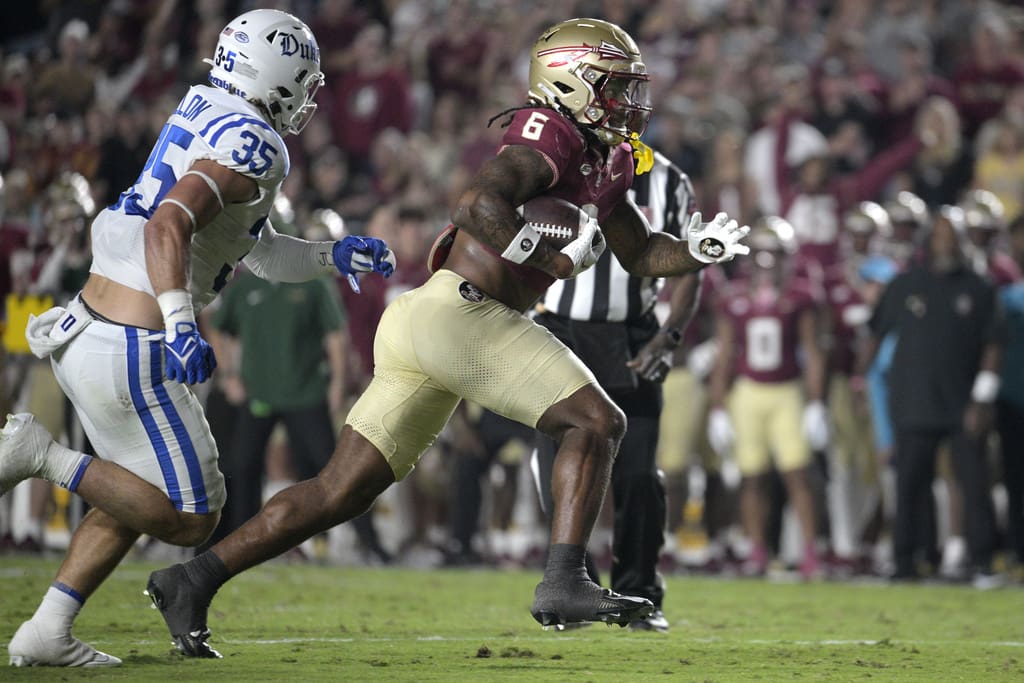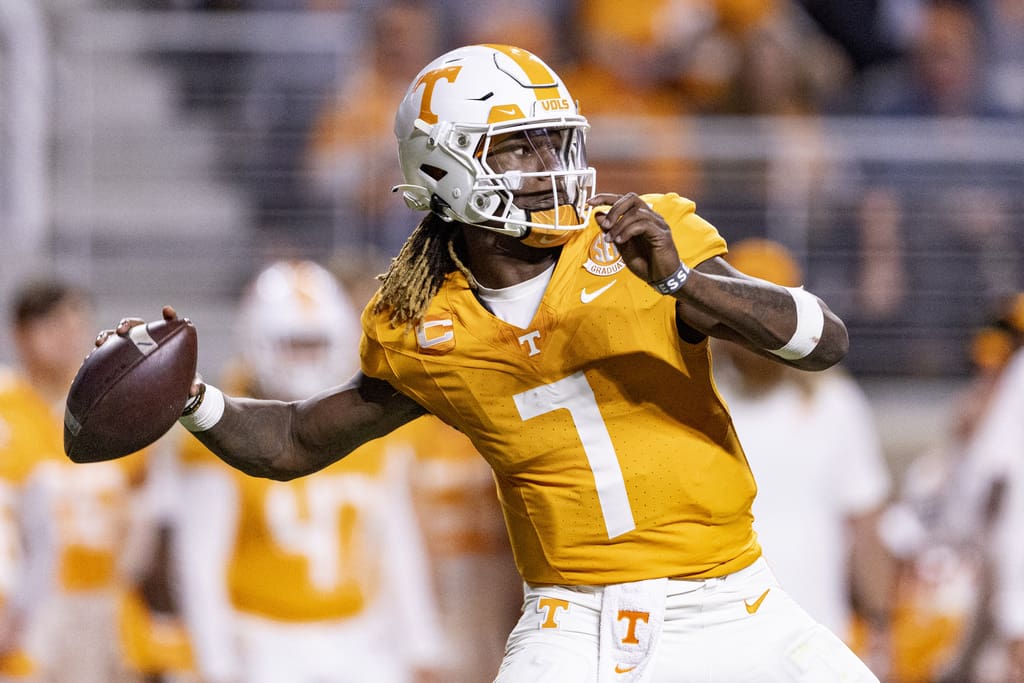Boston Bruins
Colageo: Boston Bruins Will Build on New Mold
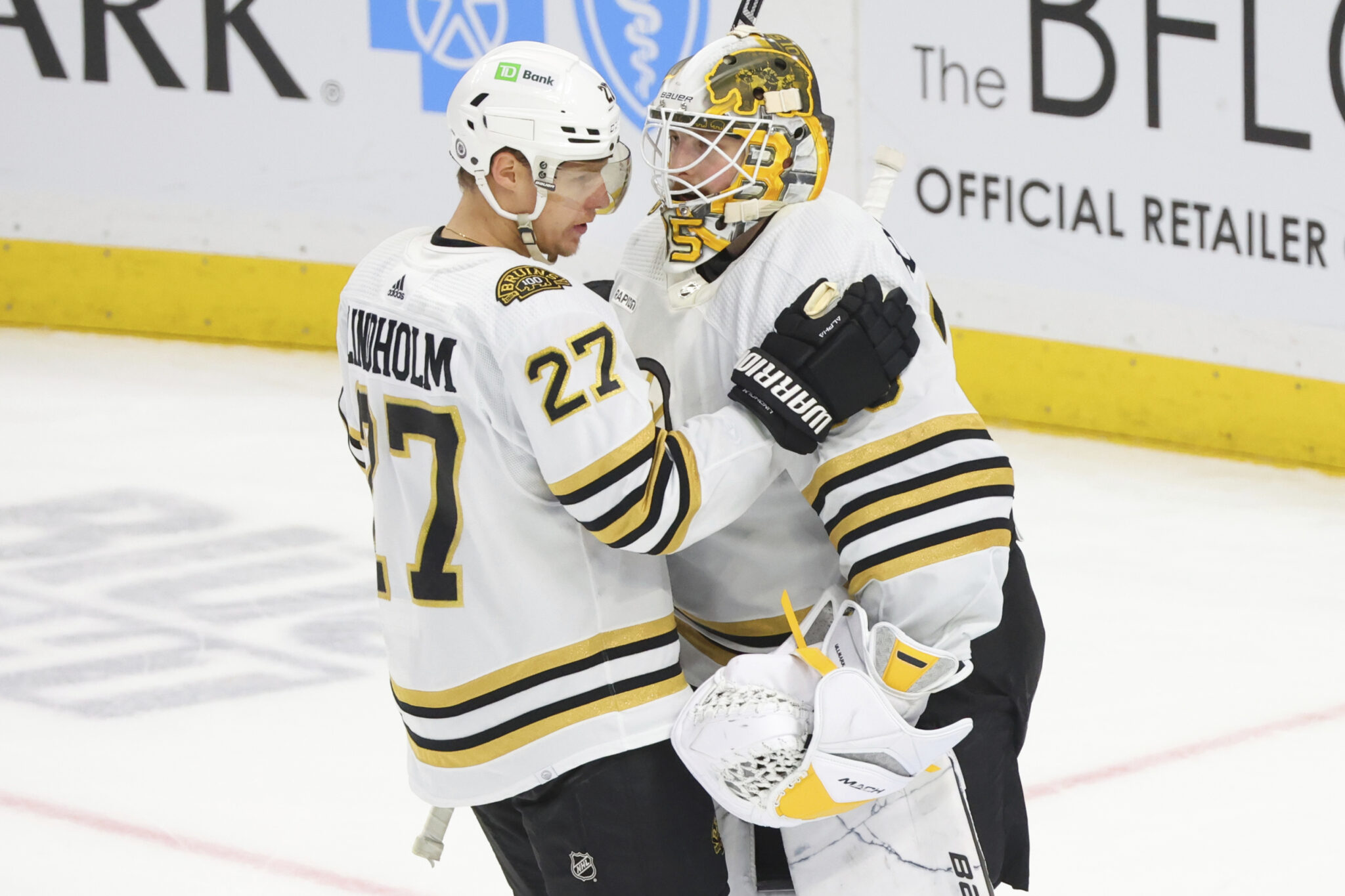
Can the Boston Bruins as presently constituted win the Stanley Cup?
The National Hockey League would lead 32 fanbases to believe they have an equal chance; after all, it’s a salary-cap world. But check through the 18-year list of cap-era champions, and only the St. Louis Blues and Washington Capitals failed to reach another Cup final within four years before or after their triumphs.
In other words, NHL champions are legitimate Cup contenders as established over a number of years, even in the cap-controlled (i.e. parity) era overlapping back to pre-lockout hockey.
For example, the Hurricanes lost to the Red Wings 2002 and won the Cup in ’06. The Ducks went seven with the Devils in 2003 and lost but won it all in ’07.
Nobody brings up either squad when talking about the great champions in NHL history, and for that matter few saw New Jersey in 1995 as anything more than a big, bad spoiler with a coach, a goalie and a game-choking system whose widespread emulation was threatening to ruin the very sport.
That is, until the Devils won again in 2000, went to the Cup series in ’01 and won it one more time under Pat Burns in ’03. By then, more people had learned to appreciate what a great collection of hockey players that was.
There are no flukes hammered into the sides of the Stanley Cup.
So what characteristics are essential to these teams? Anyone who would read this column knows a hockey team cannot win without trustworthy goaltending, great leadership, a ton of grit, veteran savvy, opportunistic speed, the ability to improvise, and many other intangibles.
So, without intending to overlook any of the aforementioned qualities befitting a champion, two distinct roster models emerge when surveying championship rosters going all the way back to the NHL’s 1967 expansion: A Cup winner had either two top-line centermen or a “big three” on defense. Or Bobby Orr.
The prototypical Big 3 for the purposes of this conversation harkens back to Larry Robinson, Guy Lapointe and Serge Savard, who won together with the Montreal Canadiens in 1973, ’76, ’77, ’78 and ’79. Big Bird was just breaking in for the ’73 run, when Jacques Laperriere was still getting it done, but no way does Ken Dryden win the Cup six times in eight tries without his defense including J.C. Tremblay in ’71 when Savard was injured.
The Devils, anchored by two great Scotts (Stevens and Niedermayer), were a next-generation Big 3 Cup champion with Ken Daneyko in the shutdown role in ’95 and still playing a supporting role after puckmover Brian Rafalski emerged as his successor.
Cap-era equivalents: Duncan Keith, Niklas Hjalmarsson and Brent Seabrook with three-time winner Chicago and Victor Hedman, Ryan McDonagh and Mikhail Sergachev with Tampa Bay. Minus McDonagh (trade) and Sergachev (LTIR), the Lightning can upset someone else’s apple cart but desperately need a shutdown defenseman at this deadline to get back into the Cup conversation.
Two top-line centers is the more frequent model, epitomized in the cap era by Sidney Crosby and Evgeni Malkin with three-time winner Pittsburgh. The Kings won twice with Anze Kopitar and Jeff Carter, and the Boston Bruins won in 2011 and twice got back to the final with Patrice Bergeron and David Krejci.
The Boston Bruins are obviously no longer thusly built, but they have a new foundation poured around their own Big 3 defense of Charlie McAvoy, Hampus Lindholm and Brandon Carlo.
How close the Boston Bruins get to one more championship during Brad Marchand’s career depends on many mitigating factors, but their Big 3 puts them in the conversation, more than a 65 or even a 50-win season and – I know this will ruffle some feathers – more than their bevy of talent on the wing.
The Blackhawks could have won without Patrick Kane, but they could not have won without their Big 3.
The Red Wings, who won in 1997, ’98 and 2002 on the shoulders of centermen Steve Yzerman and Sergei Federov, were more of a Big 3 D construct when they went back and forth with Pittsburgh in ’08 and ’09. Niklas Kronwall (27) shared the heavy lifting with Niklas Lidstrom (37), Rafalski (34) and deadline pickup Brad Stuart (28).
One of these two foundations evidently underpins several NHL teams, so having the blueprint guarantees nothing. Not having it in place guarantees, however, that a team’s time is not yet.
So a quick perusal of teams whose regular season performances are compelling to Cup-contention consideration is coming to this space in stages. Which model do they fit? Is it actualized or still more potential? (Many times, the pieces are in place, but the pieces are not sufficiently matured or the team is otherwise unready for the postseason grind.)
Boston Bruins: Their new blueprint is legitimate, but the B’s remain an unfinished product in need of more nasty on the forecheck and a more physical defense partner for McAvoy. This will be a big deadline for the Bruins or a big summer. It’s got to be one or the other for Marchand to get another sniff.
The Dallas Stars, tomorrow’s opponent at TD Garden, are also a Big 3 team with Finnish veterans Miro Heiskanen, Esa Lindell supporting talented, third-year pro Thomas Harley (22).
We will revisit this topic next week and keep tabs on deadline doings that can complete a Cup-contention picture.
Which team most-famously completed its Cup-winning model at the deadline?
Why, the 1979-80 N.Y. Islanders, whose acquisition of veteran center Butch Goring from Los Angeles for winger Billy Harris and defenseman Dave Lewis solidified the Islanders’ top two lines and made them a four-Cup dynasty and the only post-expansion team to make five straight Cup finals.
My take on the Boston Bruins’s 1-3-2 homestand (with one to go): They’re tired, six months plus playoffs is a grind (every team has hit the wall at one time or another), and they will bounce back.
However – and that was the prelude to this – what exasperates their exhaustion at this point is the game continues to demand more physicality at a level and frequency that is just not in the DNA of this roster.
In season-to-season increments going back to the beginnings of Don Sweeney’s 2015 powder keg, the Boston Bruins have become a grittier squad, but they’re still not there. And, to whatever extent they can exhume snarly play from Lady Byng award candidates, there is a definite ceiling to that toughness and an emerging sense of “no mas” to the point that every team coming into TD Garden feels like, if they can just hang around, two points is more than possible.
The Stars are better than what the Bruins have faces at any point in this homestand, including the tired Canucks, the opponent that ironically quit on the game.
The fans who will fill the arena tomorrow deserve a nice sendoff, and it would behoove the Boston Bruins to match the emotional pitch that accompanied their effort against Vancouver.
When does Fabian Lysell make his NHL debut? It would seem the 21st overall draft pick from 2021 has turned a corner. The Swedish right winger has already surpassed last season’s points total (38-37) and is gone from a -12 in 2022-23 to a +10 this season.
Just sayin’… Marchand’s 1,000th NHL game was actually played on April 16, 2022, in a 2-1 win over Pittsburgh at TD Garden. I suppose, in order to keep the planets properly aligned, such career milestones historically do not recognize the playoffs. In Marchand’s case, this adds 146 more games.
Finally, while an indefinite “leave of absence from the team” implies that Milan Lucic will not be among the former teammates who gather tomorrow to celebrate Marchand’s milestone achievement before the Bruins play the Stars, it will be difficult to look at that group and not think of Lucic and his tragic plight.




